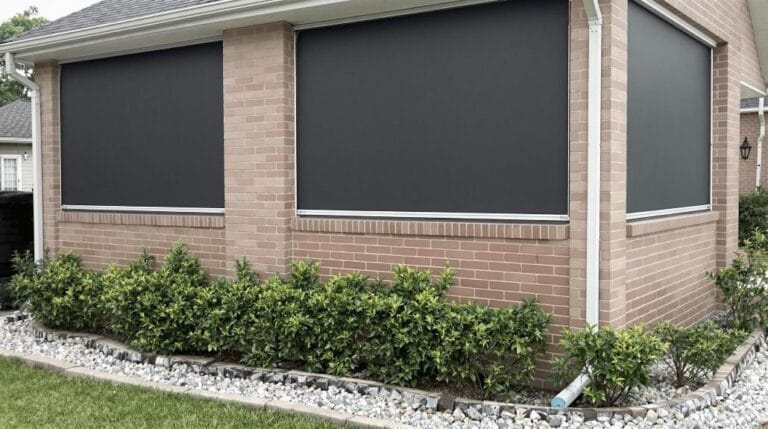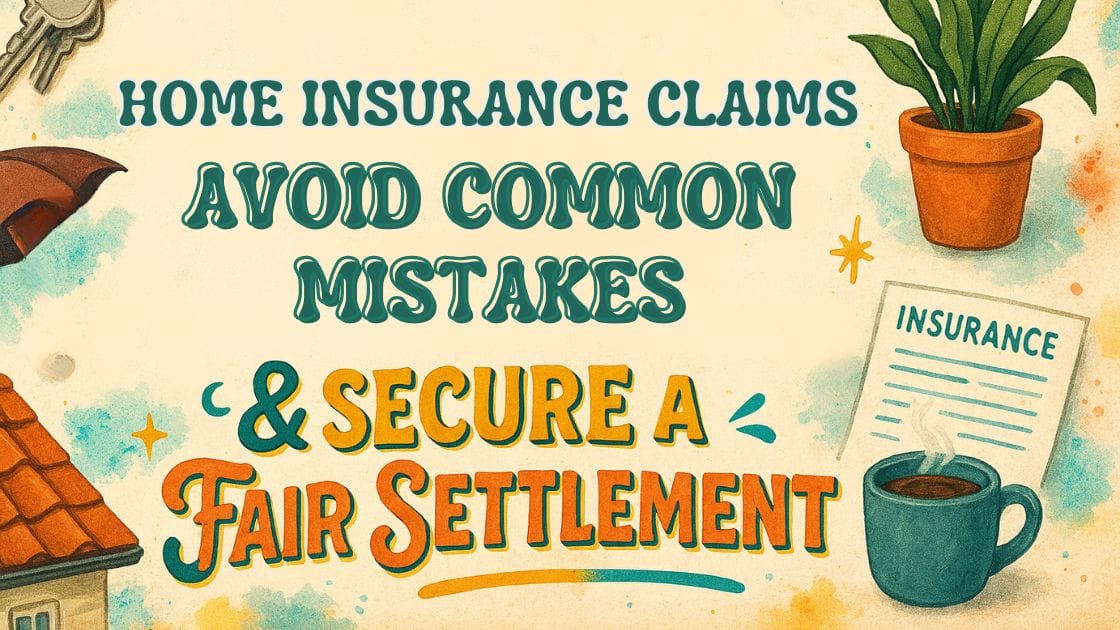Protecting your home from property impact damage is crucial for your peace of mind and financial security. While some incidents are unavoidable, there are many steps you can take to minimise the risk.
This article provides practical tips for preventing property impact damage in UK homes, and how PCLA can help you protect your investment.
Property impact damage can be prevented through strategic measures that protect homes across the UK. Regular maintenance inspections help identify vulnerabilities before they escalate into costly issues. Installing security lighting, reinforcing doors and windows, and managing trees appropriately can significantly reduce common risks.
Weather-related impacts require particular attention, with flood barriers and storm-resistant materials providing essential protection. It is advisable to review insurance coverage annually. A comprehensive protection plan that combines these elements is key to safeguarding homes against the unexpected.
Key Takeaways
- Install physical barriers such as bollards, reinforced fencing, and anti-ram posts to safeguard vulnerable areas from vehicle impacts.
- Conduct regular inspections and maintenance of trees, removing dead branches and unstable trees before they become hazards.
- Document all preventive measures and property conditions through photographs and detailed reports for insurance purposes.
- Install security cameras and motion-sensor lighting to deter accidents and provide evidence for potential claims.
- Implement appropriate drainage systems and flood barriers in vulnerable areas to prevent water-related structural damage.
Common Causes of Impact Damage in UK Properties
Before thinking about prevention, it’s worth understanding how impact damage is defined by insurers.
Impact damage poses a significant threat to homes in the UK, with several common culprits wreaking havoc on residential properties each year.
Vehicle collisions rank among the most frequent causes, as cars and lorries occasionally veer off course and strike buildings.
Natural hazards present another major risk to our properties. Falling trees, particularly during severe storms or after prolonged decay, can cause devastating damage to roofs and walls. Have you checked the health of nearby trees recently? Weather-related incidents resulted in £459 million in domestic claims during 2020.
Construction activities in neighbouring areas can also lead to unexpected property damage. Falling debris or equipment from building sites may strike homes, causing anything from minor dents to serious structural issues.
Even everyday activities can result in impact damage. From accidental reversals into garage doors to children’s cricket balls gone astray, these incidents remind us that prevention and awareness are essential.
To manage risk, start by recognising the most frequent causes of property damage.
Essential Steps for Protecting Your Home From Impact
Now that we’ve identified the common threats to UK properties, let’s focus on practical ways to shield your home from unwanted impacts.
Regular property maintenance forms the foundation of effective impact prevention. Start by inspecting exterior structures and trimming nearby trees that could pose risks during storms. Seeking prompt police reference numbers will help expedite any future vandalism claims.
Keep your gutters clear and ensure all doors and windows are secure.
Home security measures play an essential role in protecting against deliberate damage. Installing motion-sensitive lighting and security cameras can deter potential vandals.
Consider adding anti-vandalism screens to windows and reinforced door frames for added protection.
Remember to document your preventive measures and keep detailed maintenance records. This documentation not only helps track your property’s condition but also proves invaluable when filing insurance claims.
Have you reviewed your home insurance policy lately to confirm it covers impact damage?
Weather-Related Impact Risks and Prevention Strategies
While the UK’s unpredictable weather patterns have always posed challenges for homeowners, climate change has intensified these risks dramatically in recent years. From coastal erosion to flooding, properties across the nation face increasing threats that demand robust climate adaptation strategies.
Savvy homeowners are embracing flood resilience through practical measures. Installing flood barriers, using water-resistant materials, and maintaining effective drainage systems can significantly reduce damage risks.
Regular roof inspections and tree maintenance help protect against devastating storm impacts. With 48,700 storm claims reported in late 2023, preventive maintenance is more crucial than ever.
Regional variations require customised approaches. Coastal areas need stronger defences against erosion, while urban zones like London must prepare for both flooding and heat-related challenges.
The key is understanding your property’s specific vulnerabilities and taking preventive action before extreme weather strikes.
Understanding Your Insurance Coverage for Impact Damage
When disaster strikes your home, understanding the fine print of your insurance policy becomes essential for protecting your financial interests. Most standard UK home insurance policies cover impact damage, but knowing exactly what is included can make a significant difference in your claims process.
| Coverage Type | Typically Included? |
|---|---|
| Structural Damage | Yes |
| Vehicle Impact | Yes |
| Falling Trees | Yes |
| Fence Damage | No |
| Business-Related | No |
Remember that insurers expect prompt notification after an incident. You will need to document everything thoroughly and take steps to prevent further damage. While vehicle collisions and falling trees are commonly covered, damage to fences or gates might require additional coverage. Professional loss assessors can help streamline your claims process and ensure proper documentation.
Be aware that poor maintenance or pre-existing conditions could affect the success of your claim. It is worth reviewing your policy regularly to ensure you have the protection you need. If damage does occur, this guide will help you submit a claim the right way.
Professional Assessment and Regular Maintenance Guide
Regular property inspections by qualified professionals form the backbone of effective damage prevention and help UK homeowners maintain detailed safety records.
Expert risk analysis can identify potential vulnerabilities before they escalate into costly repairs, from foundation issues to roofing weaknesses.
These professional assessments, when conducted annually, create a comprehensive maintenance timeline that is essential for both insurance purposes and long-term property protection. Working with structural engineers during inspections provides independent safety evaluations that verify building stability and durability.
Scheduling Annual Property Inspections
Professional property inspections serve as the foundation of effective home maintenance in the UK. A well-structured inspection scheduling system combined with clear tenant communication helps prevent costly repairs and ensures compliance with safety regulations.
Property owners who implement annual inspections often uncover issues before they escalate into major problems. These assessments typically include thorough examinations of roofing, plumbing, electrical systems, and structural elements.
Professional inspectors utilise specialised tools to detect hidden issues that might escape untrained eyes. Thorough documentation is especially vital since property damage claims can total hundreds of millions in insurance payouts annually.
The documentation from these inspections proves essential for insurance claims and maintenance planning. It creates a detailed history of the property’s condition and demonstrates a commitment to responsible ownership.
Many UK property owners find that regular professional assessments ultimately save money by identifying potential problems early.
Expert Damage Risk Analysis
Professional hazard identification helps homeowners spot potential issues before they become costly problems. By understanding both structural and environmental risks, residents can take proactive steps to safeguard their investments.
| Risk Category | Assessment Focus |
|---|---|
| Structural | Foundation stability |
| Environmental | Radon exposure levels |
| Safety Systems | Fire detection equipment |
| Ground Issues | Soil movement patterns |
| Building Code | Compliance status |
Expert risk assessment goes beyond surface-level inspections. Specialists examine hidden dangers such as subsidence risks and analyse local environmental factors that could impact property integrity. They also ensure compliance with current safety regulations while providing detailed reports that are essential for insurance purposes. This thorough approach helps homeowners maintain their properties with confidence.
Related: For immediate actions after damage, follow these expert-recommended steps.
Maintaining Structural Safety Records
Since the implementation of the Building Safety Act, maintaining detailed structural safety records has become a critical obligation for property owners and managers in the UK.
The SSWG findings have highlighted the urgent necessity of thorough documentation for building safety.
Accurate record-keeping ensures compliance with regulatory requirements while safeguarding both residents and property investments.
Documentation standards now necessitate comprehensive safety case reports that include essential building details, registration numbers, and structural elements.
Each assessment must be properly dated and versioned to maintain a clear timeline of inspections and improvements.
Property owners should keep organised files of structural surveys, risk assessments, and maintenance schedules.
These records serve as significant evidence of due diligence and can greatly simplify the insurance claims process.
It is important to remember that well-documented safety records not only fulfil legal obligations but also demonstrate a commitment to resident safety and the preservation of property.
Tree Management and Garden Safety Measures
While homeowners often focus on interior maintenance, proper tree management and garden safety measures form the foundation of thorough property protection. Selecting appropriate tree species and understanding soil type can prevent costly damage to foundations and structures. Consulting arboricultural consultants can provide expert guidance on tree selection and placement.
Regular professional inspections help identify potential risks before they escalate into serious problems.
Smart landscaping choices make a significant difference in protecting UK homes. Well-designed gardens should direct water away from buildings while maintaining clear pathways for safety.
Have you considered how your garden layout affects your property’s vulnerability?
Professional guidance is essential for long-term tree care. Working with qualified arborists ensures compliance with preservation orders and conservation regulations.
They can help develop sustainable management plans that protect both your property and its natural assets.
Emergency Response Planning for Impact Incidents
Property owners must develop robust emergency response plans to protect their homes and families from unexpected impact incidents. Regular emergency drills and clear communication strategies help ensure everyone knows what to do when disaster strikes. Regular training sessions help occupants stay prepared and confident in executing emergency protocols.
| Emergency Type | Initial Response | Follow-up Action |
|---|---|---|
| Natural Disaster | Evacuate to safe zone | Contact insurance |
| Structural Damage | Call emergency services | Document damage |
| Utility Failure | Shut off main supply | Alert providers |
An effective plan includes updated emergency contacts, evacuation routes, and a designated meeting point. Consider creating a family communication plan that includes out-of-area contacts and local shelter locations. Remember to review and practise these procedures regularly with household members. Keep emergency supplies readily available and maintain proper documentation of important items for insurance purposes.
Cost-Effective Prevention Strategies and Long-Term Solutions
Beyond emergency planning, implementing cost-effective prevention strategies can significantly reduce the risk of property damage.
Savvy homeowners are discovering that simple upgrades, such as regular inspections and proper landscaping, offer excellent protection while keeping costs manageable.
For lasting security, cost-effective upgrades should focus on flood mitigation through practical solutions.
Installing flood barriers and retrofitting buildings with water-resistant materials can prevent expensive repairs in the future.
Many property owners have found that raised floors and natural drainage solutions provide exceptional protection against heavy rainfall.
These preventative measures often lead to reduced insurance premiums and increased property values.
When combined with thorough maintenance schedules and efficient reporting systems, these strategies create a robust defence against potential damage while maintaining financial stability.
Protect Your Home from Impact Damage
Taking action now can help reduce the risk of impact damage. Consider installing physical barriers such as bollards, reinforced fencing, and anti-ram posts to safeguard vulnerable areas. Carry out regular checks on trees and property conditions, and keep a record of all preventive measures with clear photographs and detailed reports.
Taking proactive steps to prevent property impact damage can save you significant stress, time, and money in the long run. While preventative measures are essential, accidents can still happen. When they do, PCLA, based in Northern Ireland, is here to help.
We’ll assess the damage, handle the paperwork, and negotiate with your insurer to ensure you receive the compensation you deserve. Contact us today for a free, no-obligation survey. Let PCLA help you protect your home. No win, no fee.



